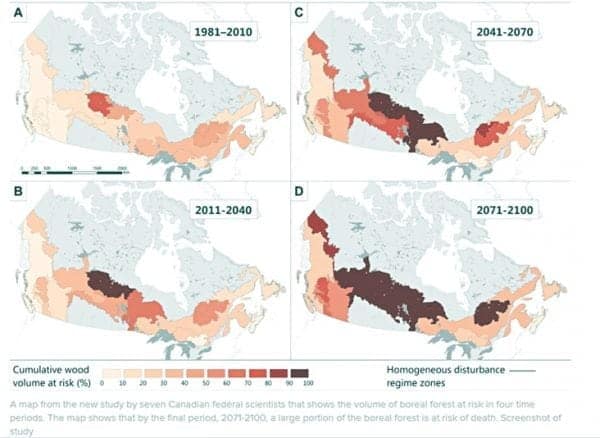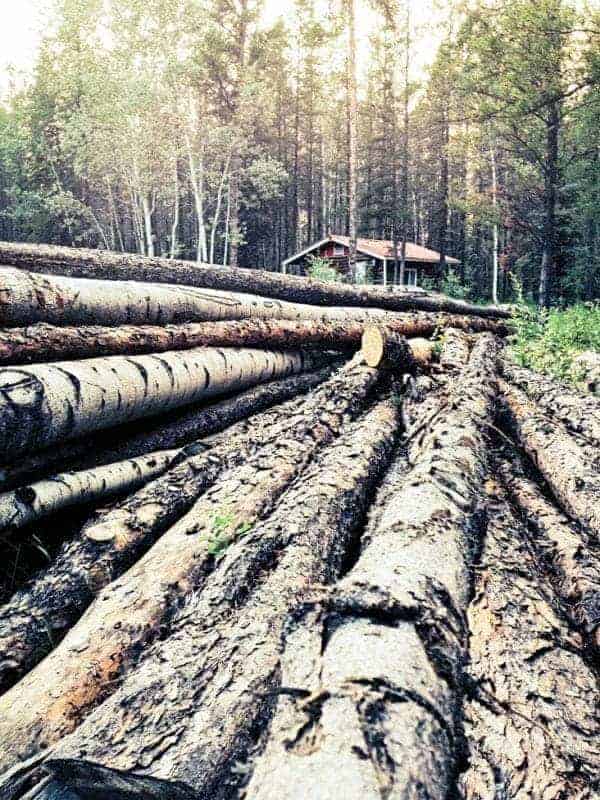New research is predicting the effects of major threats to CanadaSA����Ӱ�Ӵ�ý�s boreal forest, in the short and long term and advising governments to get ready for change.
An article that was released SA����Ӱ�Ӵ�ý� though still being edited SA����Ӱ�Ӵ�ý� modelled the effects of fire, drought, mountain pine beetle and spruce budworm on boreal forest wood supplies, in light of expected changes in climate.

SA����Ӱ�Ӵ�ý�These are probably the main disturbances that the boreal forest in Canada is experiencing currently,SA����Ӱ�Ӵ�ý� said Yan Boulanger, a co-author of the research article.
The study area dipped into the NWT, below Great Slave Lake, but focused on areas where wood is harvested industrially, which does not happen on a large scale in the NWT.
Boulanger said that while the study didnSA����Ӱ�Ӵ�ý�t look fully into the NWTSA����Ӱ�Ӵ�ý�s data, the forest here will face the same threats SA����Ӱ�Ӵ�ý� SA����Ӱ�Ӵ�ý�especially for fire, for drought.SA����Ӱ�Ӵ�ý�
SA����Ӱ�Ӵ�ý�We have a lot of different studies that are projecting very sharp increases in forest fires in (the NWT), especially along the Mackenzie River,SA����Ӱ�Ӵ�ý� he said.

The study established a baseline period by looking at the data covering these disturbances between 1981 and 2010 and simulated the effects in these areas as far into the future as 2100.
SA����Ӱ�Ӵ�ý�In our last simulation period covering 2071 to 2100,SA����Ӱ�Ӵ�ý� reads the report, SA����Ӱ�Ӵ�ý�nearly all timber volumes in most of CanadaSA����Ӱ�Ӵ�ý�s forest regions could be at risk of being affected by at least one of the four natural disturbances considered in our analysis, a six-fold increase relative to the baseline period.SA����Ӱ�Ӵ�ý�
The Department of Environment and Natural ResourcesSA����Ӱ�Ӵ�ý� latest forest health data shows a 108 per cent increase in spruce budworm population, as well as increases in other pest populations that werenSA����Ӱ�Ӵ�ý�t looked at in BoulangerSA����Ӱ�Ӵ�ý�s study, including forest tent caterpillar and willow blotch leafminer.
As well, 2017 was the fifth most active fire season in the past 30 years, with 262 fires burning 1,030,259 hectares of the 80-million-hectare boreal forest.
SA����Ӱ�Ӵ�ý�The main point is that we have to adapt at some point and to consider that in the future there will be great changes in the natural disturbance regime,SA����Ӱ�Ӵ�ý� said Boulanger, citing risks both from the perspectives of industry and ecology.
SA����Ӱ�Ӵ�ý�Adaptation is, of course, key in this process and there could be some ways to at some point mitigate those impacts.
SA����Ӱ�Ӵ�ý�For fires, there could be some management that could be done to favour more deciduous trees instead of conifers trees because they are less flammable. That's one example. But at some point, considering those changes upfront is a much better idea than considering them after the disturbance that occurred.SA����Ӱ�Ӵ�ý�
.png;w=120;h=80;mode=crop)

